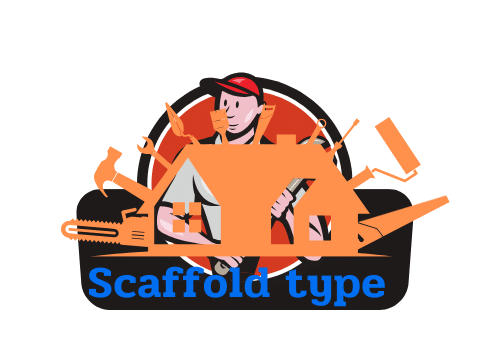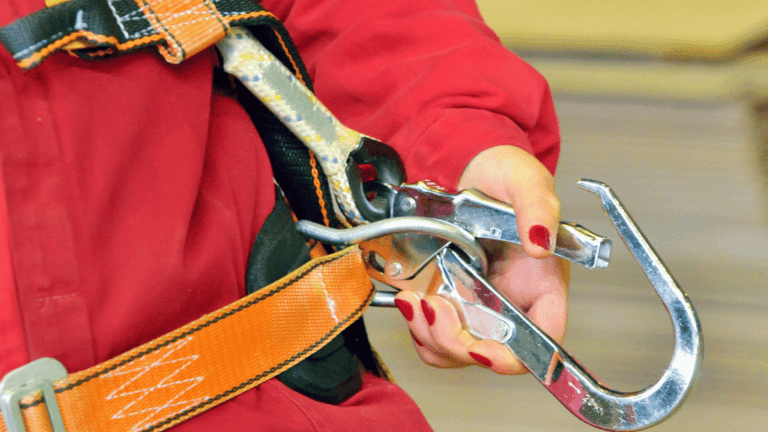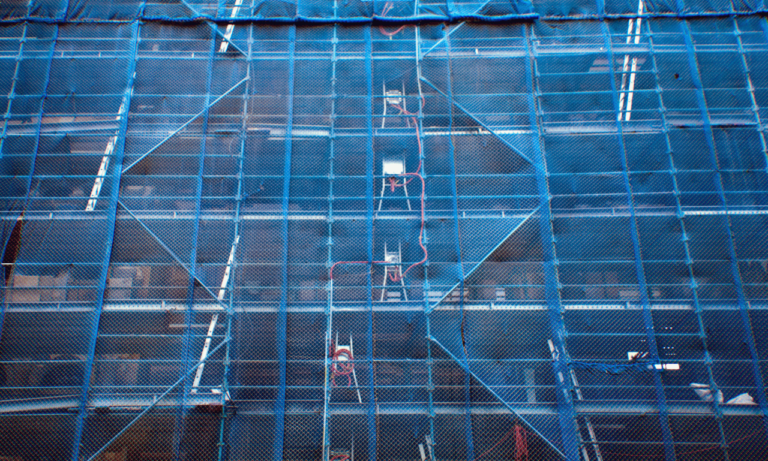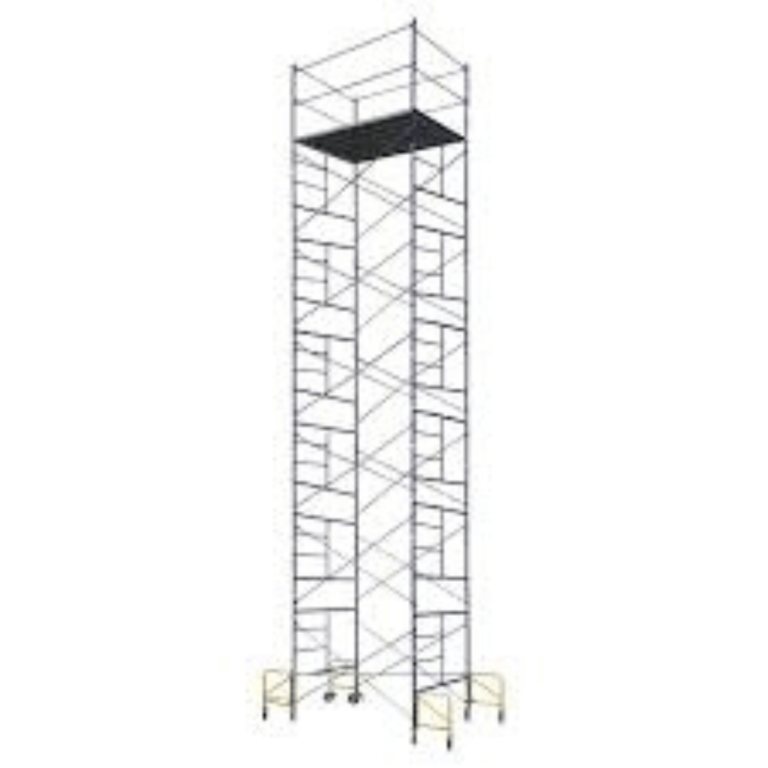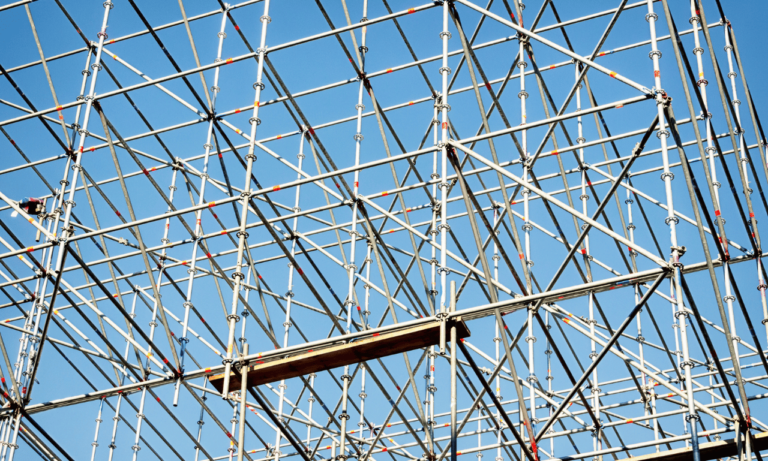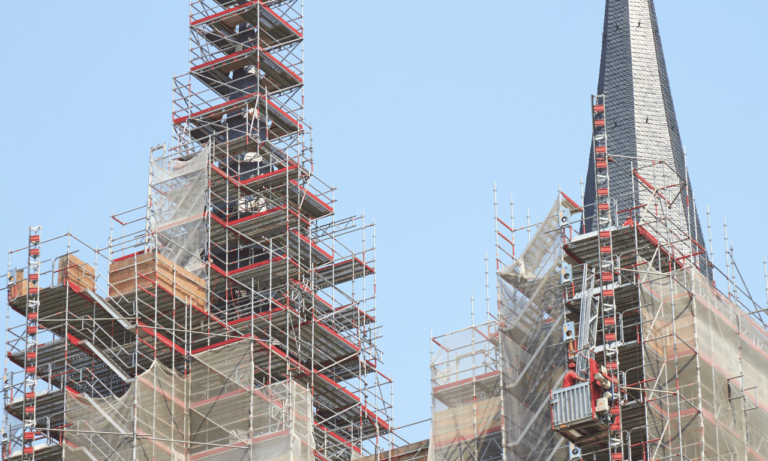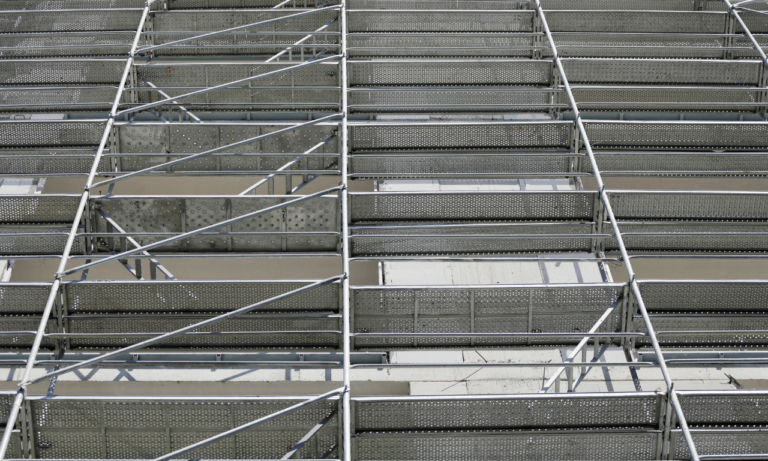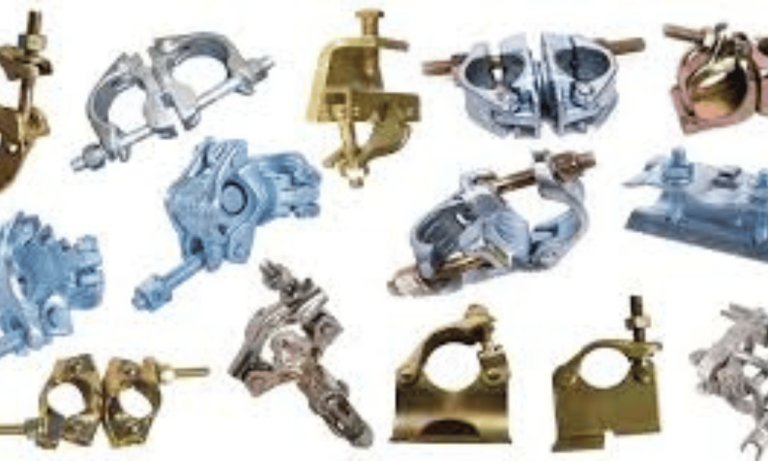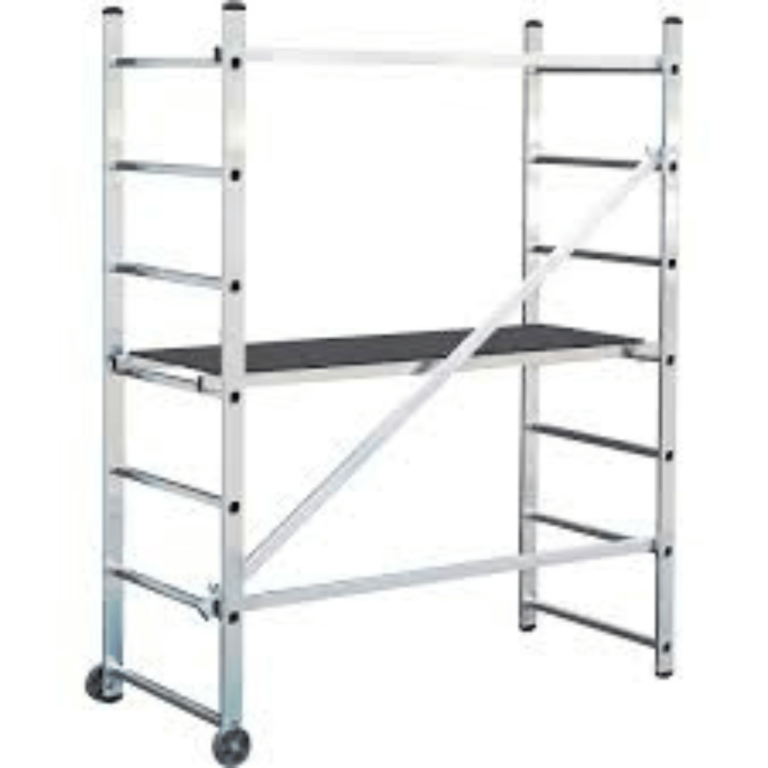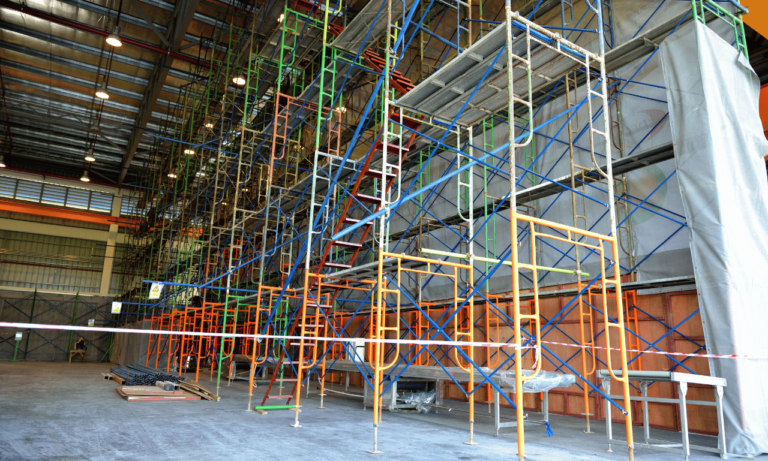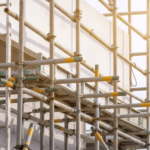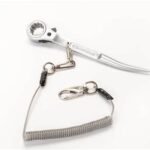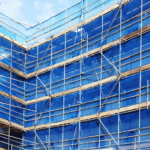Phone:
(+65)8319-0742
Formwork scaffolding is a vital component in the construction industry, providing temporary structures and support for concrete formwork. It plays a crucial role in shaping and containing wet concrete until it becomes self-supporting. Designing proper formwork systems is essential to ensure safe and efficient construction projects. By consulting an experienced formwork designer and considering health and safety risks, construction professionals can create robust and reliable formwork structures that meet regulatory requirements.
The design of formwork systems should prioritize rigidity, watertightness, and proper bracing. It should also facilitate easy removal without causing damage to the concrete. In addition to these considerations, formwork drawings should include details of formwork and joints, sealing procedures, ties, framing, and any proprietary fittings or systems. The formwork designer should also take into account vertical pour rates and construction methods to optimize the overall design.
Key Takeaways:
- Formwork scaffolding is crucial for shaping and containing wet concrete during construction.
- Consult an experienced formwork designer to ensure the design meets regulatory requirements and considers health and safety risks.
- Design formwork systems that are rigid, watertight, braced, and easily removable without damaging the concrete.
- Consider slip, trip, and fall prevention measures by designing consistent floor depths and providing adequate access and fall protection.
- Reduce manual handling risks by using precast elements or modular formwork systems.
What is Formwork?
Formwork is the surface and framing used to shape and contain wet concrete until it becomes self-supporting. It includes the forms on which the concrete is poured, as well as the frames and bracing that provide stability. The term “falsework” refers to the joists, bearers, bracing, foundations, and footings that are technically part of the formwork assembly.
The design of formwork systems should consider the ease of construction, erection, and dismantling, as well as the health and safety risks. Safe work method statements (SWMS) should be developed for high-risk construction work. A SWMS outlines the steps and hazards of a task and helps ensure safe work practices.
Formwork is the surface and framing used to contain and shape wet concrete during construction. It provides a temporary structure that supports the concrete until it becomes self-supporting. The main purpose of formwork is to maintain the desired shape and dimensions of the concrete structure and ensure its stability. In addition to the forms on which the concrete is poured, formwork also includes the frames and bracing that provide support and stability.
Falsework refers to the temporary structures used to support the formwork during construction. It includes components such as joists, bearers, bracing, foundations, and footings. Falsework is an integral part of the formwork assembly and plays a crucial role in ensuring the strength and stability of the formwork system.
The design of formwork systems is essential to ensure the ease of construction, erection, and dismantling processes. It should also consider the health and safety risks associated with the use of formwork. By developing safe work method statements (SWMS) for high-risk construction tasks, construction professionals can outline the steps and hazards involved and implement appropriate safety measures.
Designing Formwork Systems

The design of the final concrete structure is crucial for ensuring the ease of formwork construction and the health and safety of workers. It is important to consult an experienced formwork designer during the design process to address the risks associated with formwork construction and dismantling. The formwork designer should possess the necessary competence in formwork design and incorporate details of temporary work platforms and special equipment in the design.
The design process may involve the application of technical standards, engineering principles, or a combination of both to meet regulatory requirements. To ensure the stability of the formwork system, it should be designed to be rigid, watertight, braced, and tied together. This helps maintain the desired position and shape of the formwork during the construction process.
Furthermore, the design should allow for the easy and safe removal of the formwork without causing any damage to the concrete. Certification and verification of the formwork drawings should be performed by a competent person to ensure compliance with the design specifications. It is important to note that components from different formwork systems should not be mixed without proper authorization.
Technical Standards and Engineering Principles
Formwork design is guided by technical standards and engineering principles to ensure compliance with industry requirements and best practices. Technical standards provide specific guidelines and criteria for formwork design, while engineering principles apply scientific and mathematical principles to design robust and safe formwork systems.
By incorporating technical standards and engineering principles, formwork designers can create structures that withstand the loads and conditions imposed during construction. This helps enhance the structural integrity of the concrete elements and minimize the risk of failure or collapse.
Considerations for Health and Safety
When designing formwork systems, it is essential to consider the health and safety risks associated with their construction and use. Factors such as fall hazards, manual handling risks, and access requirements should be thoroughly evaluated and addressed in the design.
Designing formwork systems with proper fall protection measures, such as guardrails, can help prevent falls from height and reduce the risk of injuries. The inclusion of temporary work platforms and the use of special equipment can enhance access for workers and minimize manual handling risks.
By prioritizing health and safety considerations in the design phase, construction projects can be executed with a focus on worker well-being and accident prevention.
Slips, Trips, and Falls in Formwork Construction
When it comes to formwork construction, slips, trips, and falls can pose serious risks to worker safety. The design of the permanent structure plays a crucial role in minimizing these hazards. By considering key factors such as floor depth variations, access across recessed beams, and the layout of columns and cantilevered floor sections, the risk of slips, trips, and falls can be significantly reduced.
One important aspect of permanent structure design is minimizing variations in floor depth. Uneven floors can increase the likelihood of workers tripping and falling. By ensuring consistent floor depths throughout the structure, potential hazards can be mitigated.
Access across recessed beams is another critical design consideration. Recessed beams can create uneven surfaces and increase the risk of accidents. Designing suitable access pathways across these beams, such as ramps or level platforms, can help ensure safe movement for workers.
The layout of columns and cantilevered floor sections should also be carefully planned to minimize the risk of slips, trips, and falls. Too many columns and cantilevered sections can create obstacles and narrow walkways, increasing the chances of accidents. By optimizing the layout to allow for wider paths and clear walkways, safety can be improved during formwork construction.
Formwork systems should also provide adequate safe access and fall protection to prevent slips, trips, and falls. This includes the use of access platforms that are equipped with edge protection. Mobile scaffolding, purpose-built platforms, or elevating work platforms can be utilized to provide safe access to elevated areas.
Stair access systems or secured ladders are preferred methods of entry to platforms, as they offer stability and reduce the risk of falls. Implementing these access measures ensures that workers can move safely within the formwork structure without the risk of slipping or tripping.
In addition to the design of the permanent structure, the choice of formwork systems can also impact worker safety. Using precast elements or modular formwork systems can help reduce manual handling risks, as they require less physical effort to assemble and dismantle compared to traditional formwork.
By considering these design measures and using appropriate formwork systems, construction professionals can minimize the risk of slips, trips, and falls during formwork construction. Ensuring safe access and reducing manual handling risks are vital for the overall safety and efficiency of construction projects.
Key Design Considerations for Slips, Trips, and Falls in Formwork Construction
**
| Design Considerations | Benefits |
|---|---|
| Minimizing variations in floor depth | – Reduces tripping hazards – Ensures safe movement |
| Providing suitable access across recessed beams | – Prevents accidents on uneven surfaces – Facilitates safe movement |
| Optimizing layout of columns and cantilevered floor sections | – Creates wider paths and clear walkways – Minimizes obstructions and hazards |
| Ensuring adequate safe access and fall protection | – Reduces slips, trips, and falls – Provides secure entry to platforms |
| Utilizing precast elements or modular formwork systems | – Reduces manual handling risks – Requires less physical effort |
Types of Formwork in Construction

When it comes to construction, different types of formwork systems are utilized depending on the project’s requirements. Each formwork system has its own set of advantages and considerations. This section will explore two commonly used formwork systems: traditional formwork and modular formwork. Additionally, we will discuss the importance of safety features in formwork systems to mitigate risks.
Traditional Formwork
Traditional formwork systems have been widely used in the construction industry for many years. These systems are typically built on-site using materials like timber or plywood and are supported by scaffolding. While traditional formwork can be labor-intensive, it remains a cost-effective solution for smaller projects. Their versatility allows customization to fit different shapes and sizes.
Modular Formwork
Modular formwork systems have gained popularity in recent years due to their efficiency and ease of use. Unlike traditional formwork, modular systems are designed off-site and feature proprietary components made of materials such as hardboard, plastics, steel, and aluminum. The modular nature of these systems results in lighter weight components that are easier to handle and require less physical effort during installation and removal. This minimizes the risk of manual handling injuries for workers. Additionally, modular formwork systems can be easily adjusted and reused, providing cost-effective solutions for projects of various sizes.
Safety Features in Formwork Systems
Safety is of paramount importance in any construction project. To ensure a safe working environment, formwork systems should integrate necessary safety features. This includes components such as guardrails, safety nets, and working platforms, which serve to control the risk of falls. Additionally, advanced formwork systems incorporate features that minimize hazardous manual tasks, such as mechanized formwork systems that reduce the need for manual lifting and handling. These safety features play a crucial role in protecting workers and promoting efficient and accident-free construction projects.
| Formwork System | Advantages | Considerations |
|---|---|---|
| Traditional Formwork |
|
|
| Modular Formwork |
|
|
Difference Between Formwork and Falsework

Formwork and falsework are two integral components of construction that serve different purposes in the building process.
Formwork refers to the temporary or permanent mold used to shape and contain fluid concrete until it becomes self-supporting. It is designed to preserve the desired shape and dimensions of the structure during the pouring and curing of concrete.
Falsework, also known as scaffolding formwork, is the temporary structure created to support the formwork during the construction process. It provides stability and reinforcement to the formwork, ensuring the structural integrity of the building, roadway, or bridge being constructed.
While formwork focuses on shaping and containing the wet concrete, falsework provides the necessary support and stability for the formwork system to function effectively. Without falsework, the formwork would not be able to maintain its shape or withstand the weight of the wet concrete.
Both formwork and falsework are temporary structures used in construction projects. Formwork is primarily concerned with creating the desired shape of the final structure, while falsework supports and reinforces the formwork during construction. Together, they play a vital role in the safe and efficient execution of construction projects.
| Formwork | Falsework |
|---|---|
| Temporary or permanent mold | Temporary structure |
| Shapes and contains wet concrete | Supports and reinforces formwork |
| Preserves shape of the structure | Ensures stability during construction |
| Focuses on concrete shaping | Supports formwork system |
Formwork and falsework are essential components in the construction industry, each serving a unique function in the creation of safe and durable structures.
Types of Materials Used in Formwork Systems
Formwork systems are constructed using various materials, each offering distinct advantages. Commonly used materials include steel, timber, plastic, and aluminum. The choice of material depends on the specific requirements of the construction project.
Steel
Steel formwork systems are widely utilized in construction due to their exceptional strength, durability, and reusability. Steel offers a high load-bearing capacity, making it suitable for heavy-duty applications. Additionally, steel formwork supports complex shapes and can withstand extreme weather conditions, ensuring longevity.
Timber
While timber formwork systems have been traditionally popular, their usage is now mainly limited to smaller projects. Timber has a tendency to absorb water, which can cause warping and affect its structural integrity. However, it remains a cost-effective choice for certain applications where durability is not the primary concern.
Plastic
Plastic formwork systems have gained popularity due to their lightweight nature and ease of handling. These systems are less labor-intensive and offer quick installation, resulting in improved construction efficiency. However, it’s important to note that plastic formwork may not be as durable as other materials and may require additional support for heavier concrete loads.
Aluminum
Aluminum formwork systems combine the strength of steel with the lightweight properties of aluminum. This makes them well-suited for a wide range of applications. Aluminum formwork is versatile, allowing for rapid assembly and disassembly. It offers excellent stability and can accommodate complex shapes. Furthermore, aluminum formwork is resistant to corrosion, ensuring long-term usage.
| Material | Advantages |
|---|---|
| Steel | Strength, durability, reusability |
| Timber | Cost-effective, suitable for smaller projects |
| Plastic | Lightweight, easy handling |
| Aluminum | Strength, lightweight, corrosion resistance |
How Turbo Scaffolding can Help you Make your Job Easier
Turbo Scaffolding, a leading provider of scaffolding formwork, understands the challenges faced by construction professionals in their projects. With a wide range of products and services, Turbo Scaffolding aims to simplify and enhance the construction process.
One of the key offerings from Turbo Scaffolding is their steel scaffolding formwork systems. These systems, such as the H Frame system or V Shore Frame system, are designed to provide strong and reliable support for construction projects. Whether it’s building a high-rise structure or working on a smaller-scale project, Turbo Scaffolding’s steel scaffolding formwork systems are built to withstand the demands of the job.
To make your job even more convenient, Turbo Scaffolding offers an online store where you can easily access and purchase the scaffolding formwork systems you need. This online platform allows for a seamless and hassle-free shopping experience, enabling you to quickly select and order the products that meet your specific requirements.
In addition to their online store, Turbo Scaffolding also provides scaffold rental services. If you’re working on a project in Melbourne, Sydney, Perth, or Brisbane, you can take advantage of their scaffold rental services to meet your temporary scaffolding needs. This rental service offers flexibility and cost-effectiveness, allowing you to access reliable scaffolding without the burden of long-term ownership.
With Turbo Scaffolding, you can rely on their expertise and industry-leading products to make your construction job easier and more efficient. Their commitment to quality, reliability, and customer satisfaction ensures that you have the necessary scaffolding formwork systems to complete your project successfully. Contact Turbo Scaffolding today to explore their comprehensive range of products and services tailored to your scaffolding formwork needs.
Why Choose Turbo Scaffolding?
- Industry-leading provider of scaffolding formwork systems
- Wide range of products to meet various construction needs
- Steel scaffolding formwork systems for strength and durability
- Convenient online store for quick and easy access to products
- Scaffold rental services available in Melbourne, Sydney, Perth, and Brisbane
- Expertise and experience in the construction industry
Policy for Safe Scaffold Erection and Use
Developing a policy and work rules for safe scaffold erection and use is crucial to ensure a safe working environment. The policy should focus on sound design, selecting the right scaffold for the job, assigning competent personnel, providing adequate training, implementing fall protection measures, and establishing guidelines for proper erection, use, alteration, dismantling, inspection, maintenance, and storage. It is important to create a comprehensive policy that covers all aspects of scaffold usage to mitigate risks and ensure the safety of workers.
The scaffold policy should be developed in compliance with relevant regulatory standards such as OSHA and ANSI. These standards provide guidelines and requirements for scaffold design, construction, and use. Adhering to these standards helps ensure that the scaffold is structurally sound, stable, and capable of supporting workers and materials safely.
Input from scaffold trade associations, suppliers, and safety consultation services is highly recommended when developing the scaffold policy. These industry experts can offer valuable insights and best practices to enhance the effectiveness and safety of the policy. Their expertise can help identify specific hazards, risk control measures, and safe work practices to be included in the policy. Collaboration with these stakeholders can lead to a well-rounded and comprehensive scaffold policy.
Key Components of a Scaffold Policy:
- Design: The policy should emphasize the importance of proper scaffold design. This includes selecting the appropriate type of scaffold for the specific job, considering factors such as height, load capacity, and environmental conditions. Sound design ensures that the scaffold is structurally stable and safe for use.
- Personnel Training: The policy should outline the requirement for personnel training. All workers involved in scaffold erection, use, and dismantling should receive adequate training to understand the hazards associated with scaffold work and the necessary safety precautions. Training programs should cover topics such as scaffold assembly, fall protection, and emergency procedures.
- Fall Protection: Fall protection measures are paramount in scaffold safety. The policy should clearly define the requirements for fall protection, including the use of guardrails, personal fall arrest systems, and safety nets. Fall protection equipment should be provided and regularly inspected to ensure it is in good working condition.
- Safe Practice: The policy should establish guidelines for safe scaffold practices. This includes proper erection, use, alteration, dismantling, inspection, maintenance, and storage procedures. Adhering to these practices minimizes the risk of accidents, injuries, and equipment failure.
- Work Rules: The policy should outline specific work rules that must be followed when working on scaffolds. This can include restrictions on unauthorized modifications, limitations on the number of authorized personnel on the scaffold, and requirements for securing tools and equipment. Clear work rules help maintain a safe and organized work environment.
Creating a comprehensive scaffold policy is a proactive approach to ensuring safety on construction sites. By establishing and enforcing strict guidelines, construction companies can protect their workers from potential hazards and reduce the risk of accidents and injuries. A well-developed scaffold policy demonstrates a commitment to safety and sets a standard for safe scaffold erection and use.
Safe Scaffold Erection and Use
Safe scaffold erection and use are essential to ensure the well-being of workers and maintain the structural integrity of the scaffold. Following proper procedures during all stages, from erection to dismantling, is crucial to prioritize safety. Here are some key considerations:
- Erection: Scaffold erection should only be carried out by trained personnel who are familiar with the manufacturer’s instructions and guidelines. It is important to assess site conditions, such as the ground stability and overhead obstructions, before commencing the erection process.
- Fall Protection: Implementing adequate fall protection measures is critical to mitigate risks. Guardrails and personal protective equipment, such as harnesses and lanyards, should be used to prevent falls from scaffold platforms.
- Inspections: Regular inspections should be conducted to identify any potential hazards or issues that may compromise scaffold safety. Inspections should cover all components, including platforms, guardrails, and access points. Any defects or damage should be promptly addressed.
- Maintenance: Routine maintenance is necessary to ensure the scaffold remains in optimal condition. This includes checking for loose or missing components, inspecting connections, and assessing the stability of the scaffold. Any maintenance or repairs should be carried out by qualified individuals.
- Alterations and Dismantling: Any alterations or modifications to the scaffold should be done carefully and in accordance with established guidelines to prevent accidents. During the dismantling process, components should be systematically removed while maintaining stability and minimizing the risk of falling debris.
By adhering to these safe practices, construction professionals can create a secure working environment and reduce the likelihood of accidents or injuries.
Benefits of Safe Scaffold Erection and Use:
Proper scaffold erection and use provide several benefits, including:
- Enhanced worker safety
- Reduced risk of falls and injuries
- Improved structural stability
- Compliance with safety regulations
- Efficient and uninterrupted construction progress
Investing in safe scaffold practices is vital to achieving successful construction projects and fostering a culture of safety within the industry.
Safety Guidelines for Scaffold Erection and Use
| Stage | Guidelines |
|---|---|
| Erection | Erect scaffold following manufacturer’s instructions and considering site conditions. |
| Fall Protection | Implement guardrails and personal protective equipment to prevent falls. |
| Inspections | Conduct regular inspections to identify and address potential hazards. |
| Maintenance | Routine maintenance to ensure scaffold integrity and stability. |
| Alterations and Dismantling | Make alterations carefully and dismantle scaffold following established guidelines. |
Conclusion
In conclusion, formwork scaffolding is an essential component of safe and efficient construction projects. By following the guidelines and tips provided in this formwork scaffolding guide, construction professionals can ensure the proper design, erection, use, and dismantling of formwork systems. Consulting an experienced formwork designer and selecting reliable suppliers like Turbo Scaffolding are key steps in achieving successful construction projects.
Prioritizing construction safety is of utmost importance, and implementing proper fall protection measures, using the right materials, and following best practices in formwork scaffolding contribute to efficient and safe construction projects. Turbo Scaffolding, a trusted provider of scaffolding formwork systems, offers a wide range of products and services that support construction projects in Melbourne, Sydney, Perth, and Brisbane. Their expertise and quality products make construction jobs easier and more productive.
By adhering to industry standards, choosing the right materials, and partnering with reputable suppliers, construction professionals can ensure the success of their projects. Formwork scaffolding plays a critical role in construction safety and achieving efficient projects. Turbo Scaffolding is committed to providing top-notch scaffolding formwork solutions for construction professionals across Australia, enabling them to carry out their projects with confidence and peace of mind.
FAQ
What is formwork?
Formwork is the surface and framing used to shape and contain wet concrete until it becomes self-supporting. It includes the forms, frames, and bracing that provide stability.
What should be considered when designing formwork systems?
When designing formwork systems, it is important to consider the ease of construction, regulatory requirements, and health and safety risks. An experienced formwork designer should be consulted to ensure proper design.
How can slips, trips, and falls be minimized in formwork construction?
Slips, trips, and falls can be minimized by designing the permanent structure with consistent floor depths, providing adequate access and fall protection, and using forms that reduce manual handling risks.
What are the types of formwork systems used in construction?
There are traditional formwork systems constructed on-site using timber or plywood, as well as modular formwork systems that are designed off-site and have proprietary components.
What is the difference between formwork and falsework?
Formwork refers to the temporary or permanent mold used to shape and contain fluid concrete, while falsework refers to the temporary scaffolding created to support the formwork during construction.
What materials are used in formwork systems?
Common materials used in formwork systems include steel, timber, plastic, and pre-formed panels made of aluminum. Each material has its advantages and considerations.
How can Turbo Scaffolding help with construction projects?
Turbo Scaffolding offers a range of steel scaffolding formwork systems and provides scaffold rental services. Their expertise and products can help make construction jobs easier and more efficient.
How to develop a policy for safe scaffold erection and use?
A policy for safe scaffold erection and use should focus on sound design, selecting the right scaffold, assigning competent personnel, providing training, implementing fall protection measures, and establishing guidelines for erection, use, and maintenance.
How can safe scaffold erection and use be ensured?
Safe scaffold erection and use can be ensured by following proper procedures during all stages, including erection, inspection, maintenance, and dismantling. Fall protection measures, regular inspections, and adherence to guidelines are essential.
What is the key takeaway from this guide?
This guide emphasizes the importance of safe and efficient formwork scaffolding in construction projects. Consulting experienced formwork designers, selecting the right materials, and prioritizing safety can contribute to successful projects. Turbo Scaffolding offers solutions to support construction projects.
